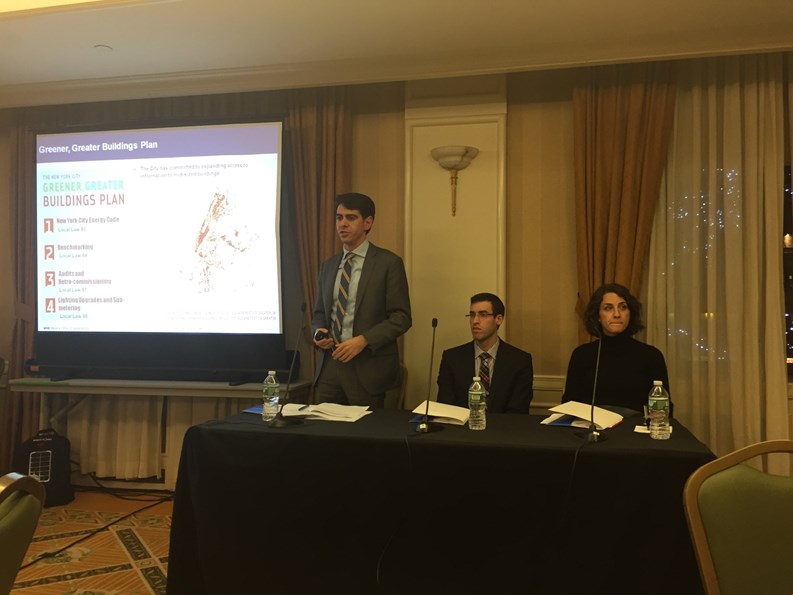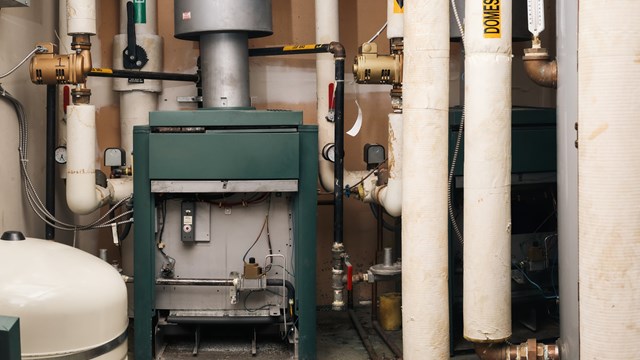New York City buildings have achieved 100 percent compliance with Local Law 43, a part of the overall Greener, Greater Buildings Plan put in place in 2009 to improve the energy efficiency of existing buildings and reduce the city’s carbon footprint over time. LL43 requires that buildings phase out No. 6 heating oil in favor of cleaner grades of fuel or natural gas.
On August 16, 2010, former Mayor Michael R. Bloomberg signed Local Law 43, which requires that all buildings in New York City convert to cleaner grades of heating oil, either No. 4 or No. 2, and eventually phase out their use to natural gas. By 2015, all existing boilers that are currently burning No. 6 oil were required to convert to cleaner fuels like No. 4 oil temporarily (or directly to No. 2 oil or natural gas, or both). By 2030, all properties are scheduled to convert to No. 2 oil or natural gas, or a combination of both, known as “dual fuel.”
Local Law 43 also mandates sulfur content in heating oil No. 4 had to be reduced in half from 3,000 ppm (parts per million) to 1,500 ppm. Additionally, all heating oil today must contain 2 percent biofuel.
Reduce Greenhouse Gases
One of the main components of the city’s plan, according to Patrick Love, who spoke at Argo Real Estate’s Argo University for Boards on February 25 at the Hotel Beacon, was that New York City is aiming for a 40 percent reduction in greenhouse gases by 2030 and an 80 percent reduction by 2050.
Love, the New York City Carbon Challenge coordinator in the Mayor’s Office of Sustainability under Mayor Bill de Blasio, noted that one of the main contributors to pollution happens to be buildings. “I sit within the Mayor’s Office of Sustainability, and what our office is tasked with doing is improving the environmental quality of New York City through a series of programs and policies that we have,” he says, adding that teams are working on environmental remediation, greenhouse gas reduction, building energy efficiency, waste initiatives, and transportation, among other programs.
“What we’re tasked with doing is creating this suite of programs and policies that add up together to be New York City’s comprehensive greenhouse gas reduction strategy, comprehensive sustainability strategy. So under the de Blasio administration we have this overarching sustainability plan called One New York. You previously might have known this as PlaNYC, same document, now updated under the new administration, a little bit more expansive in its scope and reach.”
Targeting Buildings
“In New York City, the majority of our greenhouse gas emissions come from our building stock. So around 70 percent of greenhouse gas emissions come from the electricity that comes to light our buildings, the heating and cooling in our buildings, and also there’s other pieces of this pie that add up to our greenhouse gas profile. But in New York City our largest share is buildings,” says Love.
Love also touted the success of the NYC Clean Heat program. According to a press release, as of June 30, 2015, No. 6 heating oil has been phased out as a primary heating oil in New York City buildings. The New York City Department of Environmental Protection had achieved 99.8 percent compliance at program’s end.
“Between the beginning of NYC Clean Heat in 2012 and the program’s end in 2015, nearly 6,000 heating oil conversions were completed from No. 6 or No. 4 oil to a cleaner fuel. More than 75 percent of these conversions have been to one of the cleanest fuels, which include ultra-low sulfur No. 2 oil, natural gas, biodiesel, and steam. Roughly 1,500 buildings converted to a cleaner fuel just in the past year, many with the help of NYC Clean Heat,” according to officials.
Joshua Soble, an account manager with Bright Power, an energy management firm, said that his company has been working with city planners and buildings to implement all phases of the city’s energy efficiency plans.
Soble presented a few case examples of how eliminating No. 6 oil and implementing other energy and water conservation measures resulted in comprehensive savings. Chelsea Gardens, for example, a six-story, 151-unit complex in Manhattan, converted and decommissioned its No. 6 boiler, upgraded heating controls, balanced its steam distribution system, and installed new boilers and mixing valves, to the tune of a total project cost of $732,312. Lighting and water measures were also installed and the building received $105,700 in NYSERDA incentives. The projected first year energy savings is $192,055 and the projected payback is about 3.3 years. Energy usage was reduced by about 16 percent.
A second building—a 17-story, 139-unit co-op in the Bronx, turned out to be even more efficient. Its HVAC system was converted to natural gas, new boiler pumps, motors, valves, and Heat Timer controls were installed, along with a 75kW co-generation system. Lighting, air filtration, Energy Star appliances and new water aerators and plumbing fixtures were also put in. This $1.43 million project will achieve a 32 percent energy reduction. The first year energy savings is estimated at $307,233 with projected payback of 4.7 years. The building was eligible for a $139,000 NYSERDA incentive.
“To date, New York City has reduced its emissions by 19 percent from 2005 to 2013,” Love told the Argo board members at the event. The result of this reduction is more breathable, cleaner air for city residents, he says.
As of 2011, while only one percent of New York City buildings used No. 4 or No. 6 oils to heat their buildings, studies showed that they accounted for more soot pollution than all of the cars and trucks in New York City combined.
Debra A. Estock is managing editor of The Cooperator.







Leave a Comment